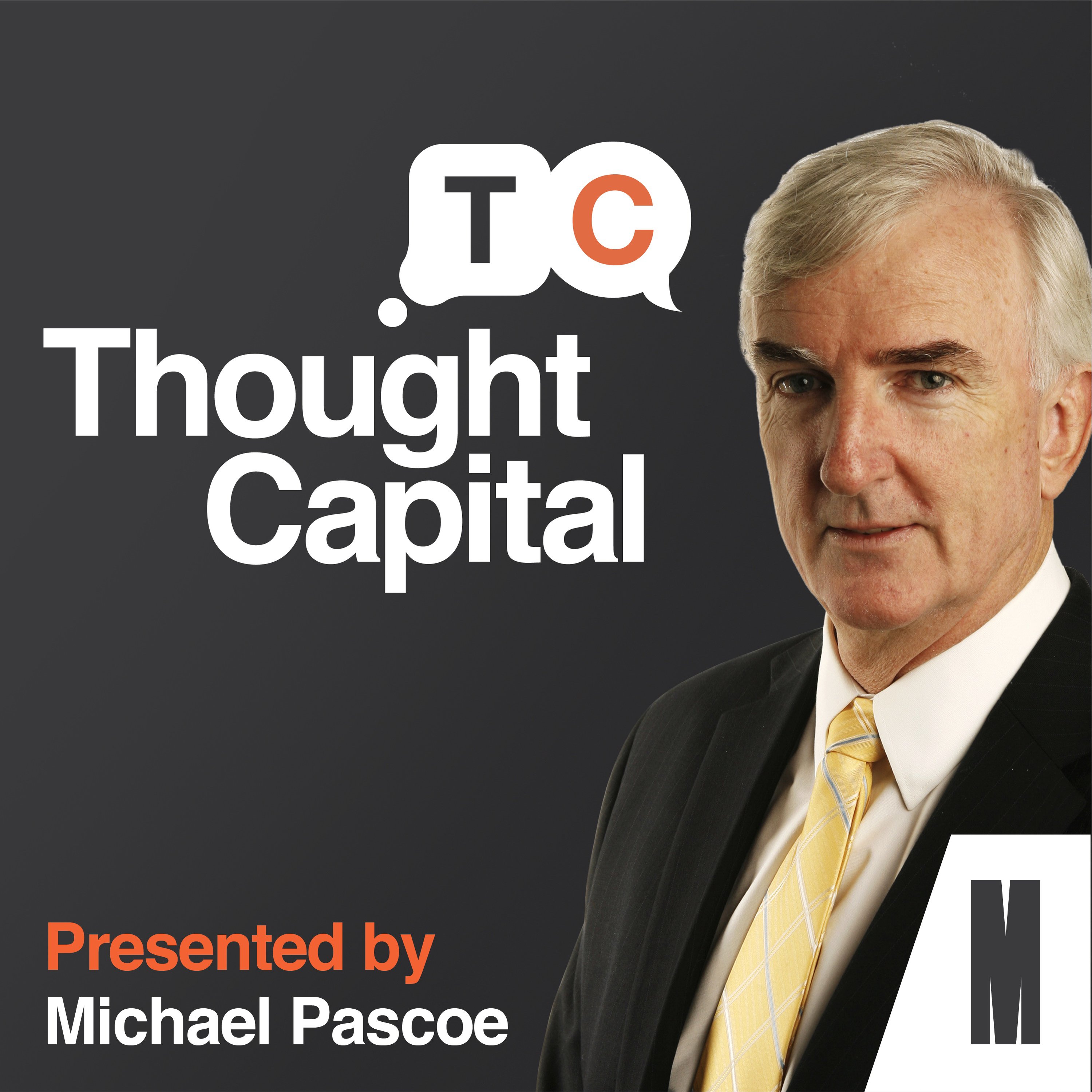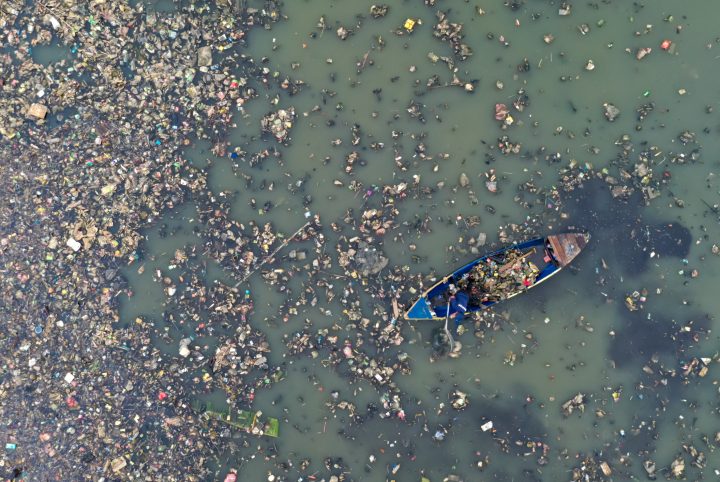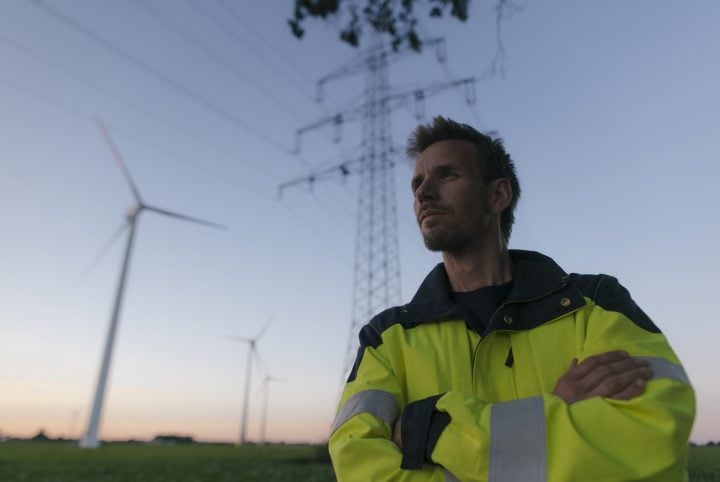Michael Pascoe:
Learn, explore, and change with Thought Capital from Monash Business School in Melbourne Australia. I’m Michael Pascoe. Energy is a key contributor to the Australian economy, to any advanced economy. As the population and wealth grows, the demand for energy is ever increasing. Per capita, we are among the world’s biggest energy consumers and also a leading energy exporter. The world’s largest exporter of coal by energy content. The fifth biggest exporter of gas.
Michael Pascoe:
Domestically, coal and gas, mainly coal, still generate about three quarters of our electricity. And in that process, a third of our greenhouse gas emissions. To have any chance of limiting climate change though, we need clean energy. So how do we solve the energy equation in Australia? And why is Australia slow on the uptake? What will it take for us to change? To discuss this, we have Associate Professor Anke Leroux from the Department of Economics, and Associate Professor Guillaume Roger from the Centre for Global Business at Monash Business School. Welcome. Guillaume, you are an economist and part of your research work is to look at how market design and regulation promotes or hinders renewable penetration. Why is it taking so long for us to switch to more renewable energy or there’s more happening than the official figures show?
Guillaume Roger:
The picture is a bit more complicated than the figures suggest. Things are changing extremely rapidly. So by that, I mean, there are still very large investments made in renewable energy sources with the grid scale on the home front through solar panels. Likewise, storage is emerging extremely fast, even faster than solar penetration as we’ve witnessed up until recently. And one after the other, coal generators exit the market, well ahead of scale and well ahead of their own plans. So there’s a lot of action in the market and the transition is really speeding up quite a bit. There are other aspects that are worth discussing, I think.
Guillaume Roger:
One is, there are some very real technical difficulties when transitioning from thermal-generation to renewable generation. Finally, on the political front, lobbyists have been very successful at influencing policy. And politics has become essentially a hindrance for multiple reasons. On the one hand, the federal government has steadfastly refused to price carbon, which of course, favours heavy polluters like coal fired plants.
Guillaume Roger:
It has only modestly invested in technology development of renewable energy with the exception of ARENA. It essentially starves its market and regulatory agencies like the AEMC, AEMO, or the AER of funding. And it subsidizes thermal generation like the Kurri-Kurri project that was recently announced. At the same time, the state governments and the federal government are essentially in open conflict when it comes to energy policy, which results in a chaotic situation for the country. This is quite problematic when you think that there’s a single national market for electricity to which almost all states are physically connected.
Michael Pascoe:
That conflict between state and federal government, could the states overtake and negate any reticence by the federal government?
Guillaume Roger:
No, that is not something that’s really possible. And the reason is that energy policy in Australia has been essentially drafted as being a joint decision between federal and state governments. So while the states are definitely trying to move in a different direction than the ones chosen by the federal government, there’s no way that they can really run completely on their own.
Michael Pascoe:
Having that massive national grid, what do we need to make that work?
Guillaume Roger:
That’s a technical question. Electricity travels on a network of wires. It’s called a meshed network because they intersect at many points. It must do so at a frequency of 50 hertz with a very narrow tolerance of, plus- minus 0.1 hertz. So it’s a very, very precise exercise and Australia has actually the longest grid in the world. So it’s great because we can run from Tasmania and South Australia all the way to far North Queensland. And we can trade energy on a very large scale, right? It’s very sunny in Queensland and it’s a bit cold in Tassie, that can benefit from this energy, for example.
Guillaume Roger:
So roughly speaking, the best way to preserve this frequency is to use rotating masses. And this is where things become tricky because rotating masses means thermal generators. So we can’t just ignore them and get rid of them. A solar farm, for example, will still rise on the frequency, which is created by these rotating masses and the solar farm is not easily controllable. Output can vary and that generates energy imbalance on the network and destroys this frequency. So with more renewable energy, keeping the grid safe and operational, becomes increasingly difficult. That is also why agencies like AEMO sometimes decide to curtail solar outputs. So for example, it prevents us from selling the energy into the grid when it becomes unstable. And it also slows down sometimes introduction of new solar farms. It’s very picky when it comes to connecting solar farms for exactly that reason.
Michael Pascoe:
And we need obviously a lot more storage to make the whole thing work. We do have to get rid of coal generation, so the next wave of investment has to be storage first.
Guillaume Roger:
It will be storage. There’s no doubt about that. And the very reason that it has to be storage is because there’s essentially no energy transition without storage. The reason is very simple. Most of the energy that we produce, the renewable energy that we produce in Australia, is solar energy. But solar energy is plentiful around middle of the afternoon, say 2:00 in the afternoon, but no one needs it at that time. We need it when we get home and we get home around 6:00 PM. And the peak in fact in demand is around 7:00 PM. What we need to do, of course, is be able to store this energy so that we can shift the energy production to later in the day. So this is why this need of storage is so obvious. And thankfully, we are finally getting to the point where technology allows us to store electricity on a large scale. So we will solve this problem. Storage itself is not economically viable in the current circumstances, but it’s on the cusp of being so. And we see already in Australia, risk scale storage emerging extremely fast.
Michael Pascoe:
What market signals do we need or would you recommend to speed up that storage revolution?
Guillaume Roger:
Storage can feed on two sources of revenue. One is price arbitrage. And so conceptually, it’s very simple, buy low and sell high, right? But technically, it’s very hard because no one knows when low exactly is the lowest. And no one knows when high exactly is the highest. One other source of revenue that is currently supporting investment in storage is having essentially those units on standby for security purposes. And so we can think of this as being a lump sum payment or constant payment for just being available just in case there’s a small crisis. So this is what’s sustaining the current investments. We expect that energy arbitrage is really the source of revenue into the future. And the argument at present is that the cost of batteries is still sufficiently large, that this energy arbitrage needs a very large arbitrage opportunity. As the cost of batteries are decreasing, and of course, those arbitrage opportunities will not be so large. And so there’ll be many more of those smaller arbitrage opportunities that can sustain battery investments into the future.
Michael Pascoe:
Now, to fire up Australia’s recovery plan out of COVID, the federal government has chosen to focus on gas rather than renewables. How clean is gas and why do you think the government is focusing so much on it while many parts of the world are already turning away from it?
Guillaume Roger:
It’s a good question. There are two bits to this question. The first one is very simple. Yes, gas is cleaner than coal. We know that carbon emissions from the gas plants are about 50% of the carbon emission for a coal plant for the same energy outputs. So that’s an improvement, but of course, it’s certainly not a panacea. It’s also more expensive to run and so we don’t want them to be running all the time. Usually, we use gas plans to address transitory peaks in demand because it can ramp up and down faster than coal plants. So as I mentioned an improvement, but it’s certainly not getting us anywhere near where we need to be in terms of energy transition.
Guillaume Roger:
Why this? Well, there’s got to be a way to make sense of this policy choice, but certainly not as an economist and much less as an observer of the energy market. It could be perceived as being strange that you want to subsidize the gas plant. At the same time, we observe thermal generators exiting the market. And as you pointed out, many countries have turned their back to gas plants. There’s this persistent belief in Australia, which I think is largely forged by lobbying that we face a shortage of dispatchable supply. And that’s never been true in recent history. In fact, we had excess of dispatchable supply through the 2010 years. So there’s no compelling need for additional supply at the moment.
Guillaume Roger:
All the blackouts we’ve been experiencing are not because of a shortage of supply. They’ve been always because of transmission problems as the case, for example, in South Australia in 2016. So as somebody who can make sense of this policy choice, I presume that the Hunter Valley may be in need of jobs and that’s probably a more compelling reason to the policy than making a good economic policy.
Michael Pascoe:
So we could end up with another stranded asset.
Guillaume Roger:
Very much so. And that’s why it needs to be subsidized, because nobody wants to actually to invest in this on a commercial basis.
Michael Pascoe:
Is that an example of the market working better than politics when the market didn’t want to build a gas plant?
Guillaume Roger:
You’re talking to an economist. So I can only say, yes, I think it’s a wonderful example of the market sending you a signal saying we don’t need any more capacity.
Michael Pascoe:
It sounds like Australia is still very much in the grip of fossil fuels. We don’t know what the future will hold and exactly how the climate crisis will affect us. Anke, part of your research is water management. Australia is a hot and dry country predicted to be hard hit by climate change in the future. In many parts, the world water is already a scarce resource. Large urban areas consume a lot of it. So how is climate change impacting the access to water in Australia? What are we seeing already?
Anke Leroux:
You’re absolutely right. For many parts of the world, the water sector will be one of the hardest hit from climate change. So for example, parts of the Northern hemisphere have to prepare for much more of frequent and extreme rainfall events and really severe flooding. On the other hand, water scarcity that already affects hundreds of millions of people in rural, but also urban centers, especially in India and China. Well, for those people, climate change means that water scarcity is going to become a lot worse. So when it comes to urban water scarcity, for example, two things converge to make it worse. And one is the fact that urban migration and larger cities demand more water. And then on the other hand, you have of course more erratic rainfall and reduced river flows making the situation problematic. So those two combined make urban water scarcity a real problem.
Michael Pascoe:
So we’ve got a future of maybe too much water too quickly in places that don’t need it and less water in places that are already short of it. And it’s not possible to be terribly confident about where that will happen?
Anke Leroux:
We have a fair idea when it comes to regional projections, but when it comes to local projections or over shorter time scales, seasonal time scales, for example, that becomes a lot harder to predict. Also, the impact of climate change when it comes to water is a lot less certain than, for example, temperature changes. There, we have a much better idea of what might happen in the future. With precipitation rainfall, in many parts, we might see on average, similar rainfall, but much more erratic, many more extreme events, longer droughts and more extreme rainfall. So that’s the real problem.
Michael Pascoe:
What is measurable about climate change impact on water in Australia so far?
Anke Leroux:
We have seen in Australia, parts of Australia, for example, the Southern Western part of Australia, there, we’ve already seen up to 30% less water availability than we had in the past. In areas such as Melbourne, for example, I’m sure many of us remember the millennium drought in the nineties and early 2000s. So events like that projected would become more frequent. So when previously we had shorter duration, long droughts like that might become more frequent. So some modeling, for example, suggests that there’ll be a 30% lower inflow into Melbourne’s reservoirs in the future due to climate change.
Michael Pascoe:
How do we handle that? We’ve got critical problems already destined to get worse. What do we need to be doing now?
Anke Leroux:
Yes, with adaptation to climate change, there are often a number of options. In the water sector, for example, there seems to be an easy solution, and that is to build a desalination plan for example, which is seemingly assuring our supply. The problem with a sort of solution like that is that it’s relatively expensive. In Melbourne, our desalination plant cost us about $450 million a year, and we don’t always use it. In fact, we use it in very few number of years.
Anke Leroux:
And given that the technology doesn’t really take well to mothballing, it really pays to think about alternative options where we can supplement our reservoir water with. For example, there, it turns out that rainwater and storm water harvesting have very different risk profile to reservoir inflows. So for example, when it’s been dry for a long time, the catchments around the reservoirs become very dry and any rain that falls will be absorbed. And often, it doesn’t result in inflows into reservoirs. Storm and rainwater harvesting on the other hand is decentralized. So it occurs over larger urban scale. We have a better chance of catching rain where it falls and also collecting it because most of the surfaces in urban areas are impermeable.
Michael Pascoe:
And storm and rain water harvesting is not energy intensive, unlike the salination plants.
Guillaume Roger:
But I think there’s also something that needs to be said: We price water in a terrible way in Australia and we’re extremely wasteful in our water consumption decisions because we do not receive the credit pricing. So I think, a little tweak in the pricing structure of most water contracts will really go very long way.
Anke Leroux:
Yes, I completely agree with you.
Michael Pascoe:
So are you painting a future like my boyhood past living in the country depending upon a rainwater tank? That will be more like life in the city for more people?
Anke Leroux:
Rainwater harvesting, most people would think of rainwater tank and that is indeed part of the solution, but you can also think of small city scale reservoirs, for example. And lakes and street scape harvesting and things like that, which have also other side benefits such as cooling the urban temperature, providing recreational resources and so forth. So it’s more varied than your backyard border tank, but that doesn’t mean it’s not part of the solution.
Michael Pascoe:
You’ve also been researching alternative land use bio-security aspects of water management. What have you been finding there?
Anke Leroux:
My other research in portfolio management has been on how do we best conserve species, threatened species in ecosystems from climate change. And again, there, we have different options that are valuable to us. And again, we find that often diversification is the key in the face of uncertainty. For example, our research on marshland conservation in the US was really interesting in that marshlands are very adaptive ecosystems. They’re very important for fish, as we all know. But they’re also really adaptive so they can grow vertically and they can also grow inland with sea level rise. However, if sea level rise is too fast, the vertical growth isn’t strong enough and so inland becomes the only option available to marshlands. And to be able to migrate inland, marshlands need to find undeveloped land. So the question then becomes which land do conservation agencies, for example, buy up to allow marshland to migrate the inland.
Anke Leroux:
And that depends very much on what kind of sea level rise we’re expecting, what kind of current land use there is on those marshlands. And so we’ve done some portfolio modeling in this extensive marshland area in Virginia, US, to exactly understand what would be an optimal portfolio of land conservation that will create much larger benefits on the uncertainty than the current approach would. So what we are proposing more is to decide now what kind of areas we should be preserving of the areas we can preserve. And we are not proposing that developed land is going to be reverted back. That would be too costly and not very practical. Our solutions look at risk and they try to mitigate that risk at the most cost effective way possible.
Michael Pascoe:
Talking about water in the future in Australia, drought is part of our mythology, is part of our reality. How do we better handle that if we’re going to have more of it? It’s one thing for the city to adapt, what does the bush do?
Anke Leroux:
Yes, Australia, I think has realized very early on that water is very scarce and that we need to preserve it. So it was one of the very first countries to separate out land rights from water rights and allow water trading. Now, to me, it’s a brilliant economic solution to a very severe environmental problem. And that is, water trading allows water to flow to where it’s most valued. So as water markets go, Australia is very well known in one of the first examples of this happening at large scale. And I would see a big role in trading between urban and rural sectors as well because in some forms, a farmer can get quite a lot more money from trading his or her water in periods where the crop is likely to fail anyway, rather than trying to save it. So I know there’s sometimes resistance to this idea, but I think, in the future, this is definitely something that has to be considered.
Michael Pascoe:
The risk factor in all this, dealing with the uncertainty. What are the challenges and complications in the markets you look at that come from that?
Anke Leroux:
Yes, one complication with risk and environmental risk in particular is that we often assume it remains constant over time. And also that the correlations of risks across different environmental assets, for example, remains constant. So here we can use novel econometric techniques to allow us to look at how environmental risk evolves over time, and then construct something like dynamic portfolios to allow us to adapt to that risk.
Michael Pascoe:
Australians threatened with drought have a tendency to say, “Well, let’s build more dams.” How keen do you think we are to do something about these problems other than promise more dams?
Anke Leroux:
So I think there’s a lot of willingness to accept this as a problem and to find solutions. What I would wish for is to take more of a diversified approach, look at demand side policies. So pricing policies, for example, as well as alternative supply side policies. I think, with those kind of things in our toolbox, we can go a long way at mitigating water crisis in the future.
Michael Pascoe:
And just in terms of priorities, what priority policy? If you’re allowed to introduce one tomorrow, what would it be?
Anke Leroux:
For me, the most in important policy would be to have strong climate policies, because as much as we are very adaptable people, it is much more preferable not to have to adapt to 2.5 or 3 or worse degrees of warming. So for me, the most important thing would be to have very strong climate policies and the energy policies that involve ideally a carbon price. Something that is economically efficient that allows us to achieve large scale emission reductions at low cost.
Michael Pascoe:
Guillaume, what do you think about that broader picture of the energy equation? What do you think it’ll take for Australia to change?
Guillaume Roger:
Well, I think the change is under way. I’m a little bit more optimistic that many people are. Because I think in spite of this obvious resistance from the federal government to really address the issue, I see that first of all, the state governments are strongly departed from that. And so it creates a situation of chaos and crisis, but I think it does force people to do something. And when in a crisis, doing something may be better than nothing. Also, you can see around you that people are embracing this fundamental shift in this energy transition. Two bits of data, for example, there were no electric cars in Australia two years ago. Essentially, nothing we can talk about. In 2022, Tesla sold as many cars here as Toyota sold Camrys. So things are changing extremely fast. We can see also, for example, investment in storage is ramping up extremely fast as well. So it gives me hope at a grass-root level people are taking this very seriously and are changing.
Guillaume Roger:
There are also serendipitous bits of good news along the way. So for example, the large electricity companies are writing down and spinning off their coal assets. So coal assets, we just spend billions purchasing and integrating in the late 2000s and early 2010, they’re now getting rid of. They’re writing them off. Not only they’re writing them off, they’re turning them off and they’re turning them off well ahead of schedule.
Guillaume Roger:
I’m quite optimistic that this is happening. And there’s a chance of this transition actually occurring well in our lifetime, which it needs to, of course. Is it too late? Well, no one really knows, right? This is a big question. It could be too late for all we know, but hopefully, not so late that we can’t do anything. The human species is remarkably adaptable, but those transition costs would be enormously costly. And making an investment in accelerating this energy transition is a tiny, tiny investment compared to the cost of transitioning to a world in which we leave this dirty energy on the one hand, but also more to the point of the consequences of serious climate change.
Michael Pascoe:
Thank you, Leroux and Guillaume Roger. Thanks for being on the show. Next time, we’ll be talking about what it takes to turn car fleets electric, and how your car could power your house. Thought Capital is written and produced by Tina Zenou. Editor is Nadia Hume. Helen Westerman is our executive producer. I’m Michael Pascoe.




